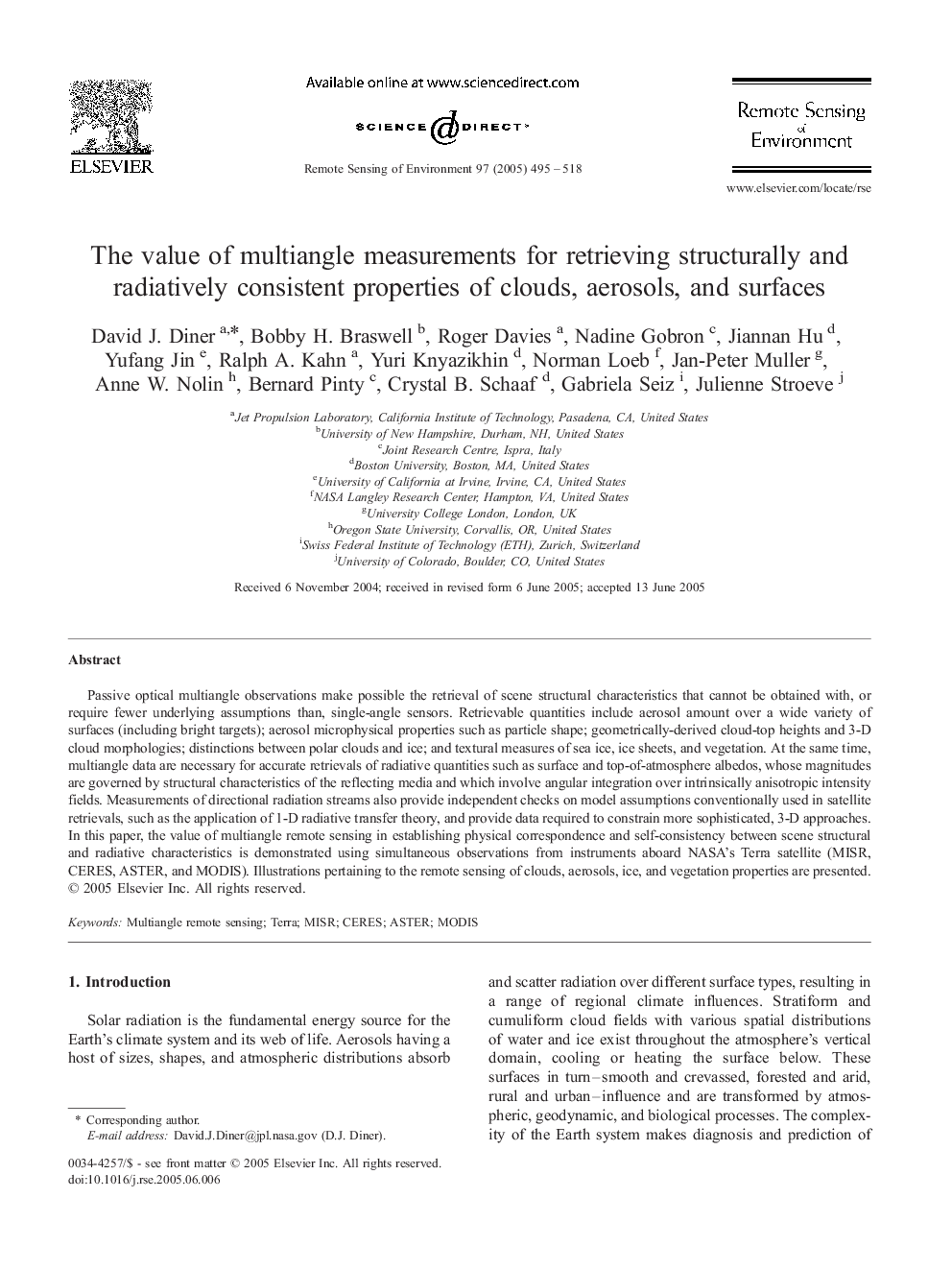| Article ID | Journal | Published Year | Pages | File Type |
|---|---|---|---|---|
| 10114123 | Remote Sensing of Environment | 2005 | 24 Pages |
Abstract
Passive optical multiangle observations make possible the retrieval of scene structural characteristics that cannot be obtained with, or require fewer underlying assumptions than, single-angle sensors. Retrievable quantities include aerosol amount over a wide variety of surfaces (including bright targets); aerosol microphysical properties such as particle shape; geometrically-derived cloud-top heights and 3-D cloud morphologies; distinctions between polar clouds and ice; and textural measures of sea ice, ice sheets, and vegetation. At the same time, multiangle data are necessary for accurate retrievals of radiative quantities such as surface and top-of-atmosphere albedos, whose magnitudes are governed by structural characteristics of the reflecting media and which involve angular integration over intrinsically anisotropic intensity fields. Measurements of directional radiation streams also provide independent checks on model assumptions conventionally used in satellite retrievals, such as the application of 1-D radiative transfer theory, and provide data required to constrain more sophisticated, 3-D approaches. In this paper, the value of multiangle remote sensing in establishing physical correspondence and self-consistency between scene structural and radiative characteristics is demonstrated using simultaneous observations from instruments aboard NASA's Terra satellite (MISR, CERES, ASTER, and MODIS). Illustrations pertaining to the remote sensing of clouds, aerosols, ice, and vegetation properties are presented.
Related Topics
Physical Sciences and Engineering
Earth and Planetary Sciences
Computers in Earth Sciences
Authors
David J. Diner, Bobby H. Braswell, Roger Davies, Nadine Gobron, Jiannan Hu, Yufang Jin, Ralph A. Kahn, Yuri Knyazikhin, Norman Loeb, Jan-Peter Muller, Anne W. Nolin, Bernard Pinty, Crystal B. Schaaf, Gabriela Seiz, Julienne Stroeve,
